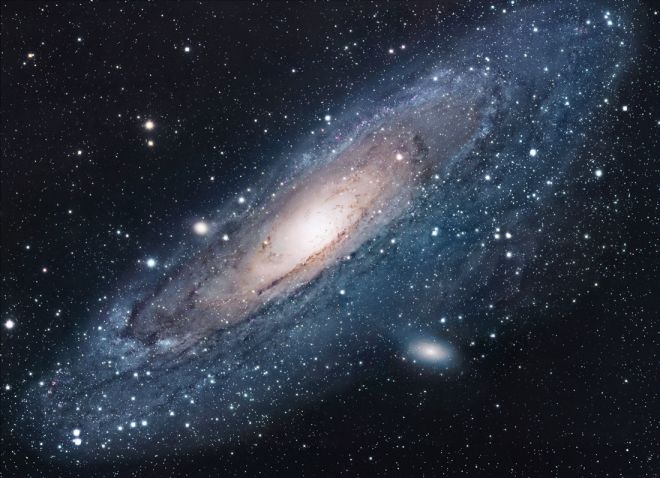Quote from the book "I, You, and All of Us" (pp. 166-167)
We humans have always been rather egocentric, also in our world view. Ever since we realised (only around the middle of the 20th century) that our Sun (with its planetary system) could be a member of a (presumed) Milky Way galaxy, we have of course immediately arrogantly assumed - without really having any evidence to back it up - that this galaxy must be the largest and most beautiful of all. The truly beautiful Andromeda Galaxy, which is "only" about 2 million light years away from us (see the photo below), was only admitted as our sister galaxy.

Logically, the beauty of this sister was then quasi-officially transferred to our own galaxy. Out of the same arrogance, the Large Magellanic Cloud was not classified as a galaxy in its own right, but as what can be seen with the naked eye, a relatively small cosmic cloud that can only be seen in the southern sky. For a long time, most European astronomers were completely unaware of its existence. Fortunately, Nature herself helped us by causing a supernova to explode almost in the centre of this cloud in 1986. This gave us the unique opportunity to determine the exact distance to the Magellanic Cloud. This observed distance is almost identical to ours (theoretically reaching the centre of the cloud), a little over 164 thousand light years (compare level 5 of the table).
Our distance to the "Orion Cloud", traditionally perhaps the most observed birthplace for young stars, has been well known for decades. It is about 1100 light years, which is also (almost) identical to our theoretical distance to the centre of the Orion Complex (the stage 3). This means that any schoolchild could also calculate our distance to the centre of stage 4, which is still missing from this "traditional ladder". The gradation of each next step is always the same and is 12.1428 for the distances (see the comments on the table). So far, so good. But why has not only no schoolchild, but also no university professor used these commonly known numbers to calculate the missing distance of 13578.3 light years to the centre of the "hypothetical Milky Way"? Only one answer comes to mind. It didn't happen because, traditionally, this number must not exist. It does not fit our arrogant world view. Surely our own galaxy cannot be that small. With the "ridiculous" thirteen and a half thousand light years, it would be far too small to include all the visible stars we have declared as "our own". We'd rather have no theory than one that wants to count away our beautiful, huge galaxy.